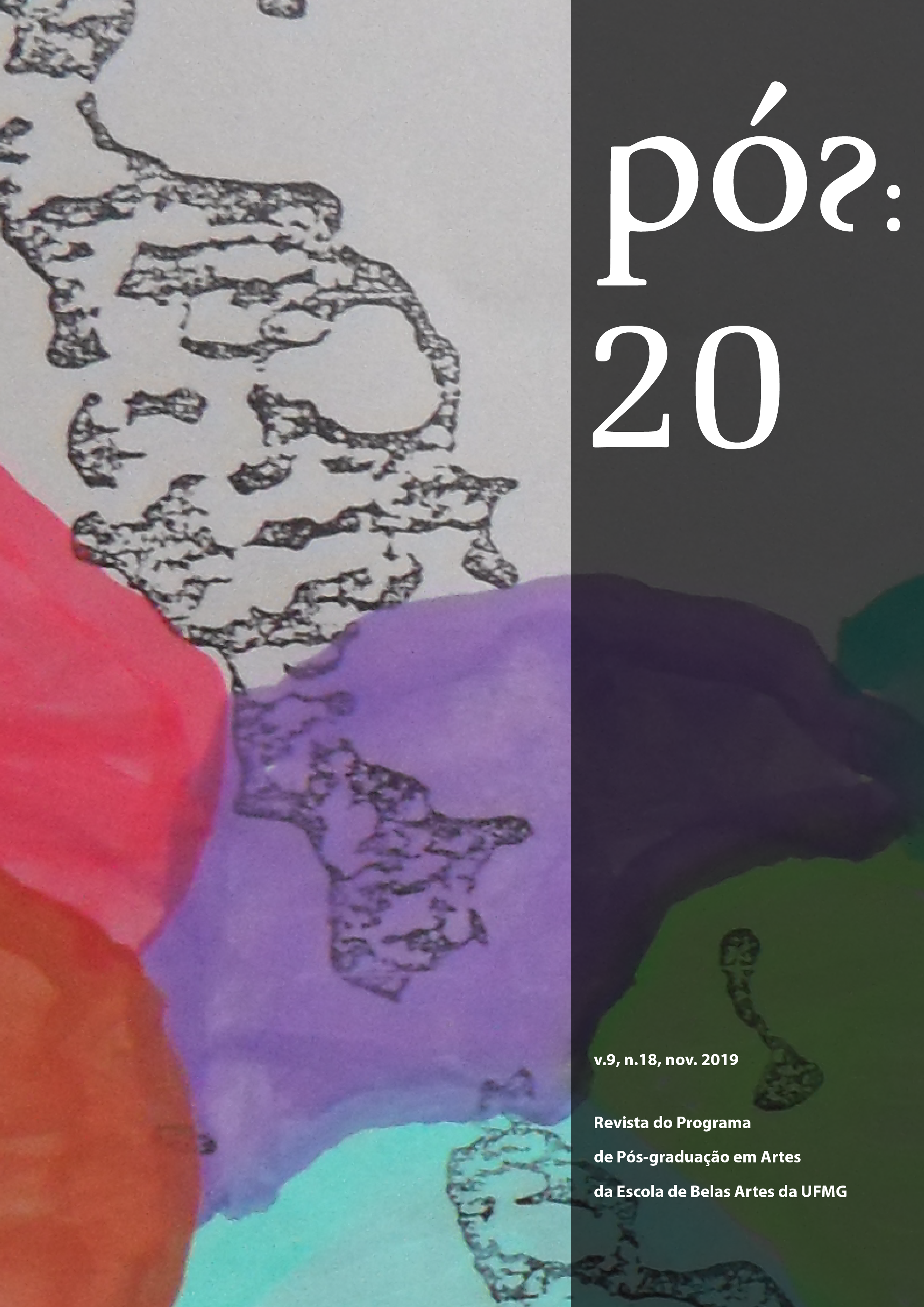Artes e bem-estar psicológico
As artes como intervenções positivas
DOI:
https://doi.org/10.35699/2237-5864.2020.20711Palavras-chave:
Psicologia Positiva, Artes, Intervenções positivas, Bem-estar psicológico, TerapiaResumo
A relação entre artes e bem-estar tem sido reconhecida em inúmeros estudos, incluindo aqueles realizados em âmbitos da saúde, da terapia e da educação. Da música às artes visuais, passando pelo cinema e pela fotografia, a artes foram e são recursos de primeira ordem não apenas para a cura, mas sobretudo para a prevenção e para a promoção da saúde e do bem-estar psicológico. Neste artigo, a partir do reconhecimento do valor terapêutico das artes, identificamos suas conexões com os cinco elementos do modelo teórico de bem-estar desenvolvido por Martin Seligman (o PERMA) e, assim, sugerimos que as artes devam ser reconhecidas como intervenções positivas sob o amplo panorama da Psicologia Positiva.
Downloads
Referências
ACEBES-DE PABLO, Alberto; GIRALDEZ-HAYES, Andrea. El papel de la Musicoterapia y las terapias alternativas en el tratamiento del TDAH: un estudio exploratorio. Medicina Naturista, Zaragoza, v. 13 n. 1, p. 15-20, 2019. Disponible en: <https://dialnet.unirioja.es/servlet/articulo?codigo=6761080>. Acceso el: 20 out. 2020.
APPGAHW – ALL-PARTY PARLIAMENTARY GROUP ON ARTS, HEALTH AND WELLBEING. Creative Health: The arts for health and wellbeing. 2 ed. London: APPG, 2017. Disponible en: <https://www.culturehealthandwellbeing.org.uk/appg-inquiry/>. Acceso el: Acceso el: 20 out. 2020.
ARTS COUNCIL ENGLAND. The arts, health and wellbeing. LONDRES: Arts Council England; SPY Design & Publishing, 2007. Disponible en: <http://www.welllondon.org.uk/files/963/culture-tradition/2.%20The%20Arts,%20Health%20and%20Wellbeing.pdf>. Acceso el: 20 out. 2020.
ASCENSO, Sara; PERKINS, Rosie; WILLIAMON, Aaron. Resounding meaning: a PERMA wellbeing profile of classical musicians. Frontiers in Psychology, Lausanne, v. 9, art. 1985, p. 1-14, nov. 2018. Disponible en: <https://doi.org/10.3389/fpsyg.2018.01895>. Acceso el: 20 out. 2020.
BLOMDAHL, Christina; GUNNARSSON, Birgitta; GUREGARD, Suzanne et al. A realist review of art therapy for clients with depression. The Arts in Psychotherapy, Amsterdam, v. 40, n. 3, p. 322-330, jul. 2013. Disponible en: <https://doi.org/10.1016/j.aip.2013.05.009>. Acceso el: 20 out. 2020.
CASPI, Opher; WEIHS, Karen et al. The role of emotional processing in art therapy (REPAT) for breast cancer patients. Journal of Psychosocial Oncology, Abingdon, v. 37, n. 5, p. 586-598, sep.-oct. 2019. <https://doi.org/10.1080/07347332.2019.1590491>. Acceso el: 20 out. 2020.
CHAMBALA, Amanda. Anxiety and art therapy: treatment in the public eye. Art Therapy, Abingdon,v. 25, n. 4, p. 187-189, 2008. Disponible en: <https://doi.org/10.1080/07421656.2008.10129540>. Acceso el: 20 out. 2020.
CHLAN, Linda. Effectiveness of a music therapy intervention on relaxation and anxiety for patients receiving ventilatory assistance. Heart & Lung, Amsterdam, v. 27, n. 3, p. 169-176, 1998. Disponible en: <https://doi.org/10.1016/S0147-9563(98)90004-8>. Acceso el: 20 out. 2020.
CSIKSZENTMIHALYI, Mihaly. Aprender a fluir. Traducción de Alfonso Colodrón Gómez. Barcelona: Editorial Kairós, 2017.
DAREWYCH, Olena Helen; BOWERS, Nancy Riedel. Positive arts interventions: creative clinical tools promoting wellbeing. International Journal of Art Therapy, Abingdon, v. 23, n. 2, p. 62-69, 2018. Disponible en: <https://doi.org/10.1080/17454832.2017.1378241>. Acceso el: 20 out. 2020.
DIETERICH-HARTWELL, Rebekka. Dance/movement therapy in the treatment of post-traumatic stress: a reference model. The Arts in Psychotherapy, Amsterdam, v. 54, p. 38-46, 2017. Disponible en: <https://doi.org/10.1016/j.aip.2017.02.010>. Acceso el: 20 out. 2020.
GABLE, Shelly L.; HAIDT, Jonathan. What (and why) is positive psychology. Review of General Psychology, Thousand Oaks, v. 9, p. 103-110, 2005. Disponible en: <https://doi.org/10.1037/1089-2680.9.2.103>. Acceso el: 20 out. 2020.
GUSSAK, David. The effectiveness of art therapy in reducing depression in prisons populations. International Journal of Offender Therapy and Comparative Criminology, Thousand Oaks, v. 51, n. 4, p. 444-460, 2007. Disponible en: <https://doi.org/10.1177/0306624X06294137>. Acceso el: 20 out. 2020.
HEFFERON, Kate. & BONIWELL, Ilona. Positive psychology: Theory, research and applications. London: OUP, 2014.
HM GOVERNMENT. A connected society: a strategy for tackling loneliness. Londres: HM Government; Department for Digital, Culture, Media and Sport, 2018. Disponible en: <https://assets.publishing.service.gov.uk/government/uploads/system/uploads/attachment_data/file/750909/6.4882_DCMS_Loneliness_Strategy_web_Update.pdf>. Acceso el: 20out. 2020.
JOHNSON, Julene et al. A community choir intervention to promote well-being among diverse older adults: results from the Community of Voices Trial. The Journals of Gerontology – Series B, Oxford, v. 75, n. 3, p. 549-559, 2020. Disponible en: <https://doi.org/10.1093/geronb/gby132>. Acceso el: 20 out. 2020.
KURTZ, Jaime; LYUBOMIRSKY, Sonja. Happiness promotion: using mindful photography to increase positive emotion and appreciation. In: FROH, Jeffrey; PARKS, Acacia (Eds.). Activities for teaching positive psychology: a guide for instructors. Washington: American Psychological Association, 2013. p. 133-136.
LANDY, Robert. Drama as a means of preventing post-traumatic stress following trauma within a community. Journal of Applied Arts and Health, Bristol, v. 1, n. 1, p. 7-18, 2010. Disponible en: <https://doi.org/10.1386/jaah.1.1.7/1>. Acceso el: 20 out. 2020.
LECKEY, J. The therapeutic effectiveness of creative activities on mental well‐being: a systematic review of the literature. Psychiatric and Mental Health Nursing, Hoboken, v. 18, n. 6, p. 501-509, 2011. Disponible en: <https://doi.org/10.1111/j.1365-2850.2011.01693.x>. Acceso el: 20 out. 2020.
LEE, Juyoung; KRAUSE, Amanda; DAVIDSON, Jane. The PERMA well-being model and music facilitation practice: preliminary documentation for well-being through music provision in Australian schools. Research Studies in Music Education, Thousand Oaks, v. 39, n. 1, p. 73-89, 2017. Disponible en: <https://doi.org/10.1177/1321103X17703131>. Acceso el: 20 out. 2020.
LOMAS, Tim. Positive art: artistic expression and appreciation as an exemplary vehicle for flourishing. Review of General Psychology, Thousand Oaks, v. 20, n. 2, p. 171-182, 2016. Disponible en: <https://doi.org/10.1037/gpr0000073>. Acceso el: 20 out. 2020.
MASTANDREA, Stefano.; FAGIOLI, Sabrina; BIASI, Valeria. Art and psychological well-being: linking the brain to the aesthetic emotion. Frontiers in Psychology, Lausanne, v. 10, art. 739, p. 1-7, 2019. Disponible en: <https://doi.org/10.3389/fpsyg.2019.00739>. Acceso el: 20 out. 2020.
MENTAL HEALTH FOUNDATION. An evidence review of the impact of participatory arts on older people. Londres: The Baring Foundation; Mental Health Foundation, 2011. Disponible en: <https://www.mentalhealth.org.uk/sites/default/files/evidence-review-participatory-arts.pdf>. Acceso el: 20 out. 2020.
OMS. Documentos básicos – con las modificaciones adoptadas hasta el 31 de diciembre de 2014. 48 ed. Ginebra: OMS, 2014. Disponible en: <https://apps.who.int/gb/bd/PDF/bd48/basic-documents-48th-edition-sp.pdf#page=7>. Acceso el: 20 out. 2020.
ROBINSON, Ken, ARONICA, Lou. El elemento. Traducción de Mercedes Vaquero. Buenos Aires: Grijalbo, 2010.
RUSK, Reuben; WATERS, Lea. Tracing the size, reach, impact, and breadth of positive psychology. The Journal of Positive Psychology, Abingdon, v. 8, n. 3, p. 207-221, 2013. Disponible en: <https://doi.org/10.1080/17439760.2013.777766>. Acceso el: 20 out. 2020.
SELIGMAN, Martin E. P. Flourish: a new understanding of happiness and wellbeing – and how to achieve them. London: Nicholas Brealey Publishing, 2011.
SELLE, Eric; SILVERMAN, Michael. Cardiovascular patients’ perceptions of music therapy in the form of patient-preferred live music: exploring service user experiences. Nordic Journal of Music Therapy, Abingdon, v. 29, n. 1, p. 57-74, 2019. Disponible en: <https://doi.org/10.1080/08098131.2019.1663245>. Acceso el: 20 out. 2020.
STEGER, Michael; SHIM, Yerin; RUSH, Brenna; BRUESKE, Libby; SHIN, Joo Yeon; MERRIMAN, Leslie. The mind’s eye: a photographic method for understanding meaning in people’s lives. The Journal of Positive Psychology, Abingdon, v. 8, n. 6, p. 530-542, 2013. Disponible en: <https://doi.org/10.1080/17439760.2013.830760>. Acceso el: 20 out. 2020.
SIN, Nancy; LYUBOMIRSKY, Sonja. Enhancing well-being and alleviating depressive symptoms with positive psychology interventions: a practice-friendly meta-analysis. Journal of Clinical Psychology, Hoboken, v. 65, n. 5, p. 467–487, 2009. Disponible en: <https://doi.org/10.1002/jclp.20593>. Acceso el: 20 out. 2020.
SWAMINATHAN, Swathi; SCHELLENBERG, Glenn. Current emotion research in music psychology. Emotion Review, Thousand Oaks, v. 7, n. 3, p. 189-197, 2015. Disponible en: <https://doi.org/10.1177/1754073914558282>. Acceso el: 20 out. 2020.
TIERRANUESTRA. Sonidos de la tierra. Disponible en: <https://www.sonidosdelatierra.org.py/nosotros.php>. Acceso el: 20 out. 2020.
THE ARTS are an ‘indispensable tool’ in helping the NHS, Matt Hancock tells The King’s Fund. College of Medicine and Integrated Health, UK, 6 nov. 2018. Disponible en: <https://collegeofmedicine.org.uk/the-arts-are-an-indispensable-tool-in-helping-the-nhs-matt-hancock-tells-the-kings-fund/>. Acceso el: 20 out. 2020.
Downloads
Publicado
Versões
- 2020-12-01 (2)
- 2020-11-29 (1)
Edição
Seção
Licença
Copyright (c) 2020 Andrea Gilraldez

Este trabalho está licenciado sob uma licença Creative Commons Attribution-NonCommercial 4.0 International License.
Autores que publicam nesta revista concordam com os seguintes termos:
- Autores mantém os direitos autorais e concedem à revista o direito de primeira publicação, com o trabalho simultaneamente licenciado sob a Creative Commons Attribution-NonCommercial 4.0 International License que permite o compartilhamento do trabalho com reconhecimento da autoria e publicação inicial nesta revista.
- Autores têm autorização para assumir contratos adicionais separadamente, para distribuição não-exclusiva da versão do trabalho publicada nesta revista (ex.: publicar em repositório institucional ou como capítulo de livro), com reconhecimento de autoria e publicação inicial nesta revista.
- Autores têm permissão e são estimulados a publicar e distribuir seu trabalho online (ex.: em repositórios institucionais ou na sua página pessoal) a qualquer ponto antes ou durante o processo editorial, já que isso pode gerar alterações produtivas, bem como aumentar o impacto e a citação do trabalho publicado
- É responsabilidade dos autores a obtenção da permissão por escrito para usar em seus artigos materiais protegidos por lei de Direitos Autorais. A Revista PÓS não é responsável por quebras de direitos autorais feitas por seus colaboradores.












